Bonnie Prince Charlie’s Lost Gold: Scottish Highlands Treachery and Skullduggery
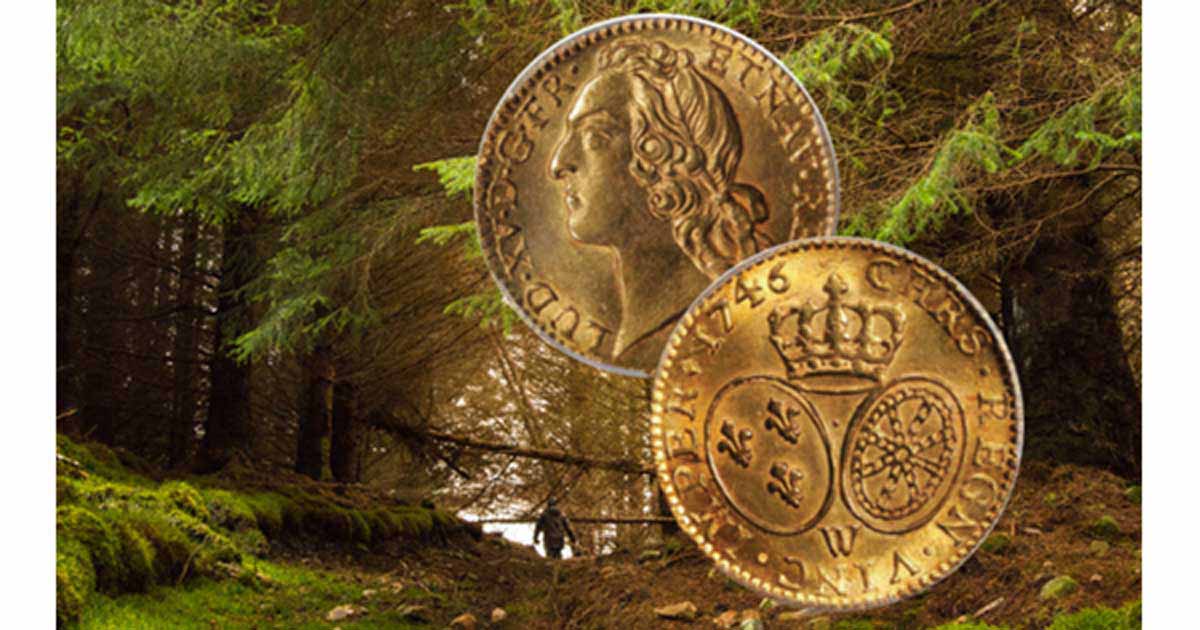
Although only one leather bag of gold coins has ever been recovered, no other treasure in Scottish history has inspired such controversy as the lost Jacobite Gold. The story begins in 1745 when Prince Charles Edward Stuart (Bonnie Prince Charlie) arrived in Scotland claiming the thrones of Scotland, England and Ireland, in the name of his father James Stuart (the Old Pretender). Charlie managed to secure financial support from both Spain and Rome.
The Story of the Jacobite Gold
Spain pledged 400,000 livres (or Louis d’or) per month for the Jacobite cause in Scotland, but getting these funds to the rebel army was proving difficult. The first instalment of gold was dispatched in 1745 by Charles’ brother Henry, who was residing in France. The French sloop Hazard (renamed the Prince Charles) successfully landed its monies on the north coast of Scotland at Tongue, but it was intercepted by men of the Clan Mackay, who were loyal to King George II of England.
In 1746, after Bonnie Prince Charlie’s Jacobite army was massacred at the Battle of Culloden near Inverness, he fled to the Western Isles. Before news of his defeat reached France, two frigates, the Bellona and Mars, were loaded with hundreds of casks of brandy, medical supplies, guns and ammunition, and hidden below deck was the payroll for Charlie’s Jacobite army and funds for his rebellion – 8 big bags of gold coins amounting to 1’200’000 livres. On the 10th of May 1746, the Bellona and Mars sailed into Loch nan Umah near Fort William on Scotland’s west coast – where they unloaded the stores and treasure. Six caskets of gold were transported about 20 miles (32 km) overland and buried somewhere near the banks of Loch Arkaig, just north of Fort William.
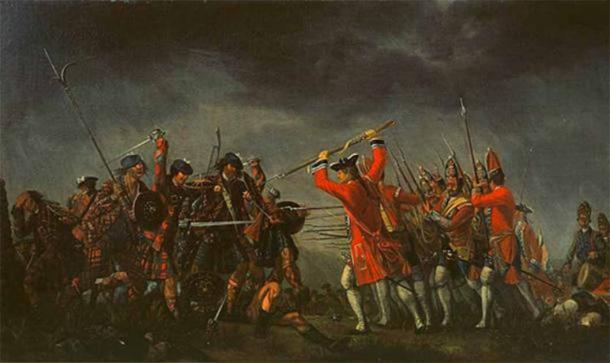
The Battle of Culloden, oil on canvas, David Morier, 1746. (Public Domain)
The secret location of the gold was entrusted to Murray of Broughton, a Jacobite fugitive who was expected to distribute the gold to the clan chiefs. But when he was apprehended by government forces, the treasure was entrusted first to Lochiel, chief of Clan Cameron, and then to Euan Macpherson of Cluny, chief of Clan Macpherson. In September 1746, Prince Charles escaped on the French frigate L’Heureux and Macpherson of Cluny retained control of the treasure. And for the next 8 years he famously lived in exile in the Scottish Highlands at a mysterious location known as Cluny’s Cave, which was featured in Robert Louis Stephenson’s ‘Kidnapped’.
Prince Charles became obsessed with securing his treasure in Scotland and in 1753 he sent his loyal supporter, Dr. Archibald Cameron, Lochiel’s brother (who was acting as secretary to the Old Pretender) back to Scotland on a covert mission to secure the treasure. Dr. Cameron based his treasure recovery mission at Brenachyle, by Loch Katerine, but he was betrayed by the notorious ‘Pickle’, a Hanoverian spy. After being arrested and charged for his part in the 1745 Jacobite uprising, he was drawn and hanged in 1753, becoming the last Jacobite to be executed.
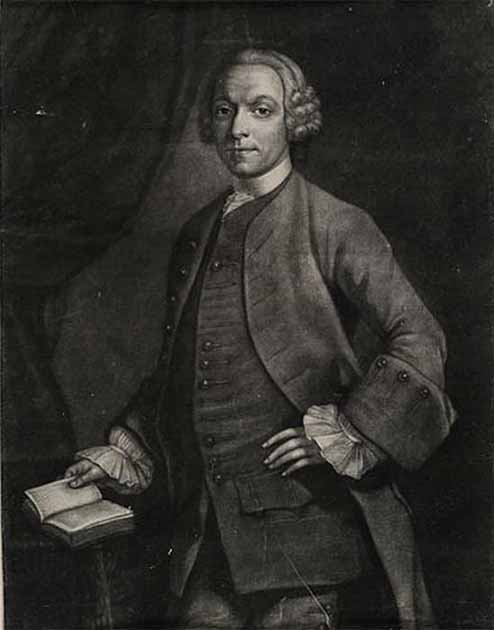
Dr. Archibald Cameron. A central character in the story of the lost treasure. (Public Domain)
The Stuarts’ papers are currently in the British Royal Family archives and they record several accusations, claims, and counter-claims among the Highland chiefs and Jacobites in exile as to the fate of the gold. They also include an account from around 1750, drawn up in Rome by Archibald Cameron, which proves Cluny “had not or could not” account for all of the gold. Charles finally accused Cluny of embezzlement and the gold became a source of discord and grievance among the surviving Jacobites.
Having spent over a decade researching the known historical texts and records pertaining to the whereabouts of this treasure, I have been able to derive four solid clues as to the possible whereabouts of the gold, from the hard evidence and stories associated to this gold hoard.
Uncovering the Hidden Treasures: the Mysterious Legacy of Clan Cameron
Clan Cameron archives record that before Dr. Cameron was arrested, he and Alexander MacMillan of Glenpeanmore hid the Prince’s gold at the Callich burn. It is also a family tradition that he and Doctor Archibald Cameron of Lochiel hid the Prince’s gold at the Callich burn while the Hanoverian troops were hot on their heels coming from Murlaggan private burial-ground, where they hid it for a time among loose soil from a newly opened grave – Bygone Lochaber, Somerled MacMillan (1971). It might be wise to study Parish records to determine who might have been buried in this cemetery at the time of Dr. Cameron’s arrest.
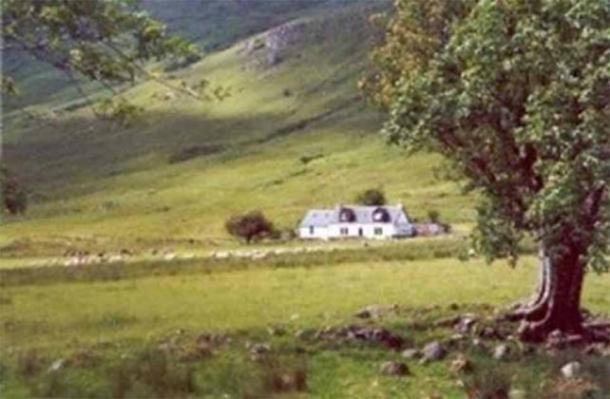
A. Murlagan, Callich Burn: 56° 58′ 42.28″ N, 5° 16′ 20.82″ W (Author Provided)
Chambers History records a gathering of men in Glen Mallie at a burn near Kinlocharkaig, in which some of the treasure was hidden:
“the time fixed for the rendezvous was altered to a week later, during which interval 15,000 of the louis d’ors were secretly buried in the wood on the south side of Loch Arkaig, about a mile and a half from the head of the loch, by Doctor Cameron, in the presence of Sir Stuart Thriepland, Major Kennedy, and Mr. Alexander MacLeod; and when the day at length arrived, only two hundred Camerons, a few MacLeans, a hundred. Divided into three parcels of 500 louis Dors each, two of which were buried in the ground and (the third placed under a rock in a small rivulet).”
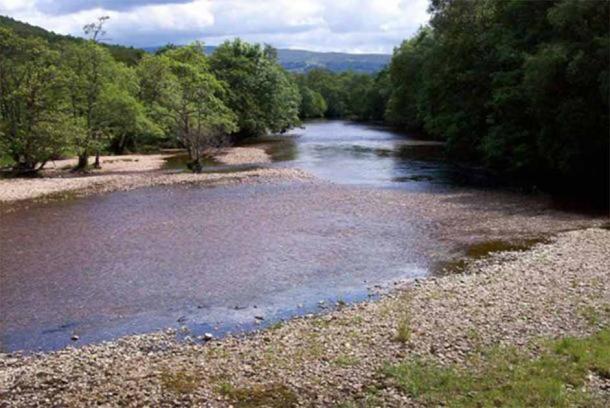
B. Glen Mallie / Kinlocharkaig: 56° 58′ 39.25″ N, 5° 16′ 21.42″ W (Author provided)
There are only three significant rivulets (burns) in Glen Mallie and the entire area around Kinlocharkaig which could be explored in a day – with a sufficient number of treasure hunters.
In 2003, a fascinating letter was discovered in a secondhand shop in Winchester, Hampshire which was passed to the West Highland Museum in Fort William. It details the deathbed confession of Neill Iain Ruairi, who claimed to have passed the loch when the treasure was being buried. Hiding in the trees, he waited and watched, and when the clansmen finally retreated, he helped himself to a bag of gold coins. He was later injured in a riding accident and in his last breaths he whispered: “a bag of gold coins is buried near Arisaig, under a black stone, with a tree root springing from it.”
According to Clan Cameron reference records, some French gold coins were found buried in nearby woods in the 1850s. Arisaig is located on the west coast and its beaches, fields, and woods have never been methodically explored for the treasure.

C. Arisaig: 56° 54′ 39.71″ N, 5° 50′ 33.07″ W (M.E. Sanseverino/flickr)
Cluny’s Cage
For decades, hill walkers in Scotland have been confused by the presence of a ‘cave’ marked on Ordinance Survey maps of Ben Alder. The cave is called ‘ Prince Charlie’s Cave’ but nobody has ever found a cave at that location! Novelist Margaret Elphinstone, a lecturer in English studies at Strathclyde University, recently proposed a solution to this mystery – concluding there never was a cave as it is marked on maps.
Ms. Eliphinstone believes early mapmakers confused the word ‘cage’ for ‘cave’. She claims the maps mark the location of ‘Cluny’s Cage’ which would have been a crudely built refuge of the 18th chief of Clan Macpherson. The cage was said to have been located somewhere on the southern slopes of Ben Alder on the north-western shore of Loch Ericht. Ms. Elphinstone found a clue to this mystery encoded within Robert Louis Stevenson’s book ‘Kidnapped’ which supported her theory.
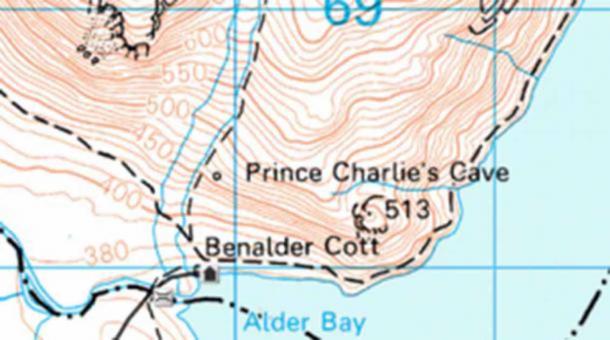
Bonnie Prince Charlie’s Cave is marked on maps, but no known cave is found at the site. (Author provided)
Knowing Stevenson borrowed heavily from Cluny’s younger brother’s account of the ‘Cage’, she searched the area and found rocks forming a natural fireplace, matching Stevenson’s description of the back of the cage in ‘Kidnapped’. Ms. Elphinstone states “There are rocks slightly higher than the cave on the maps which almost exactly fit the near contemporary descriptions of Cluny’s Cage, although the vegetation has gone.”
Cluny was the last keeper of the Jacobite gold when Charles fled to France, and it is known that Charles stayed with Cluny at his cage for some time. At least some of the treasure would have been stashed nearby for ease of access. First locate Cluny’s Cage, then determine a search zone around it. This is an extremely hazardous location.Bonnie Prince Charlie Statue Rediscovered in Edinburgh City Chambers
Earlier in February 2023, in the City Chambers in Edinburgh, a bronze figure was identified as Bonnie Prince Charlie, a sworn enemy of the Hanoverian kings. This statue, present during official meetings, remained hidden as it was thought to represent a Roman warrior and was seen as a reminder of defeat after the downfall during the battle of Culloden. In 1810 it was reintroduced into the City Chambers and has recently been acknowledged as Bonnie Prince Charlie.
‘Lost’ statue of Bonnie Prince Charlie found standing in Edinburgh City Chambershttps://t.co/NOb7QSOGlO
— Scotsman Arts (@scotsman_arts) March 8, 2023
Conclusion
If you get out there, remember, the chances are high that Jacobite supplies including guns and ammunition were buried alongside the gold coins. If so, the mineralization and corrosion around the burial site will be easier to locate than the actual gold. Red/brown discoloration might be found on soil, and it would be prudent to keep an eye open for small rusting iron objects, broken glass and bottle caps, pottery fragments, parts of flasks and wire, or anything else which might be a remnant from the hidden supplies or discarded items from the men who buried the treasure